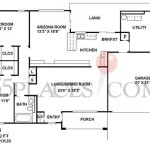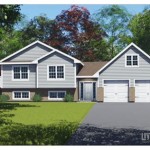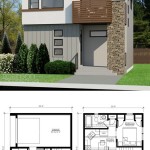Drawing Up Your Own House Plans: A Comprehensive Guide
Embarking on the journey of designing a house can be a deeply rewarding experience, offering the opportunity to create a living space tailored precisely to individual needs and preferences. While engaging an architect is a common approach, drawing up house plans independently presents a viable alternative for those with the necessary skills, resources, and understanding of design principles, building codes, and construction processes. This article explores the key aspects involved in creating your own house plans, providing a detailed overview of the considerations and steps involved.
Understanding the Scope and Requirements
Before commencing the design process, it is crucial to establish a clear understanding of the scope of the project and the requirements involved. This involves a thorough assessment of personal needs, budget constraints, site conditions, and local building codes and regulations. Neglecting these preliminary considerations can lead to significant challenges and costly revisions later in the design or construction phases.
The first step is to define the functional requirements of the house. This includes determining the number of bedrooms, bathrooms, living areas, and other spaces needed to accommodate the occupants’ lifestyles and anticipated future needs. Consider factors such as family size, work-from-home arrangements, hobbies, and entertainment preferences. Creating a detailed list of desired features and amenities will serve as a foundation for the design process.
Budgetary limitations play a crucial role in shaping the design. Establish a realistic budget that accounts for all aspects of the project, including design fees (if any), materials, labor, permits, and contingencies for unforeseen expenses. Understanding the financial constraints will guide decisions regarding the size, complexity, and materials used in the design.
The characteristics of the building site will heavily influence the design. Conduct a thorough site analysis to assess factors such as topography, soil conditions, drainage, solar orientation, prevailing winds, and existing vegetation. This information will help determine the optimal placement of the house on the site and inform decisions related to foundation design, landscaping, and energy efficiency.
Compliance with local building codes and zoning regulations is paramount. Research and understand all applicable codes and regulations, including setback requirements, height restrictions, parking requirements, and energy efficiency standards. Contact the local building department to obtain necessary information and clarification. Failure to comply with these regulations can result in delays, fines, and the rejection of building permits.
Essential Design Principles and Techniques
Creating functional and aesthetically pleasing house plans requires a solid understanding of fundamental design principles and techniques. These principles guide decisions related to spatial organization, circulation patterns, natural light, ventilation, and overall architectural style.
Space planning involves arranging rooms and spaces in a logical and efficient manner to optimize functionality and flow. Consider the relationships between different spaces and how they will be used. For example, the kitchen should be conveniently located near the dining area, and bedrooms should be located in a quieter part of the house. Circulation patterns dictate how people move through the house. Design pathways that are clear, direct, and uncluttered to facilitate easy movement and prevent bottlenecks.
Incorporating natural light and ventilation is essential for creating a comfortable and healthy living environment. Maximize the use of windows and skylights to bring natural light into the house. Orient windows to take advantage of sunlight during the day and minimize heat gain during the summer months. Design for cross-ventilation by placing windows on opposite sides of the house to allow for airflow.
Scale and proportion are important for creating a visually appealing design. Pay attention to the relative sizes of rooms and features, and ensure that they are in proportion to each other and to the overall size of the house. The Golden Ratio and other principles of proportion can be used to create harmonious and balanced designs.
Choosing an appropriate architectural style that complements the site and reflects personal preferences is an important consideration. Research different architectural styles, such as modern, traditional, contemporary, and farmhouse, and select a style that aligns with the desired aesthetic. Consider the materials, detailing, and overall character of the style.
Utilizing design software can significantly streamline the process of creating house plans. Computer-aided design (CAD) software allows for precise and efficient drafting, while building information modeling (BIM) software provides a more comprehensive approach to design, incorporating information about building materials, systems, and costs. Popular software options include AutoCAD, Revit, SketchUp, and Chief Architect. Familiarity with these tools enhances the ability to visualize and refine the design.
Creating Detailed and Accurate Drawings
The final house plans must be detailed and accurate to ensure that the building can be constructed according to the design intent. The plans should include all necessary information for obtaining building permits and guiding the construction process. This includes floor plans, elevations, sections, details, and schedules.
Floor plans are top-down views of each floor of the house, showing the layout of rooms, walls, doors, windows, fixtures, and appliances. The floor plans should be drawn to scale and include dimensions for all rooms and features. Clearly indicate the location of electrical outlets, switches, and plumbing fixtures.
Elevations are views of the exterior of the house from different sides. They show the architectural style, materials, and detailing of the building. The elevations should be drawn to scale and include dimensions for the height of the building and the size and location of windows and doors.
Sections are vertical cuts through the house, showing the internal structure and construction details. They provide a better understanding of the relationship between different floors and the roof structure. The sections should be drawn to scale and include dimensions for the height of walls, floors, and ceilings.
Details are enlarged drawings of specific building components, such as wall sections, window details, and roof details. They provide detailed information about the construction methods and materials used. The details should be drawn to scale and include annotations explaining the construction process.
Schedules are lists of materials, finishes, and equipment used in the house. They provide information about the type, size, and quantity of each item. Schedules can include door schedules, window schedules, and finish schedules.
All drawings should be clearly labeled and dimensioned, and they should conform to standard drafting conventions. Use a consistent scale throughout the drawings, and ensure that all dimensions are accurate. Provide a title block on each drawing that includes the project name, address, date, and drafter's name.
Prior to submitting the plans for building permits, it is advisable to have them reviewed by a qualified professional, such as a structural engineer or building inspector. This can help identify potential errors or omissions and ensure that the plans comply with all applicable codes and regulations. Addressing any issues before submitting the plans can save time and money in the long run.
Creating house plans independently is a complex undertaking that requires a significant investment of time, effort, and expertise. However, with careful planning, a thorough understanding of design principles, and attention to detail, it is possible to create a set of house plans that meets individual needs and preferences and allows for the construction of a dream home.

House Plans How To Design Your Home Plan

House Plans How To Design Your Home Plan

House Plans How To Design Your Home Plan

House Plans How To Design Your Home Plan

House Plans How To Design Your Home Plan

House Plans How To Design Your Home Plan

Floor Plan Creator And Designer Free Easy App

House Plans How To Design Your Home Plan

Floor Plan Creator And Designer Free Easy App

Blueprint Maker Free App








